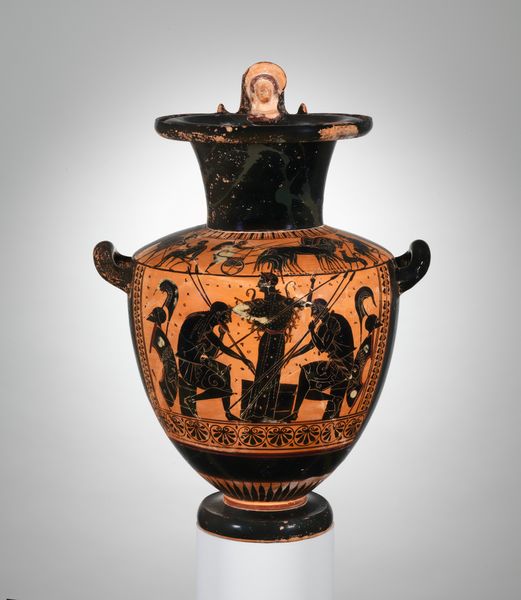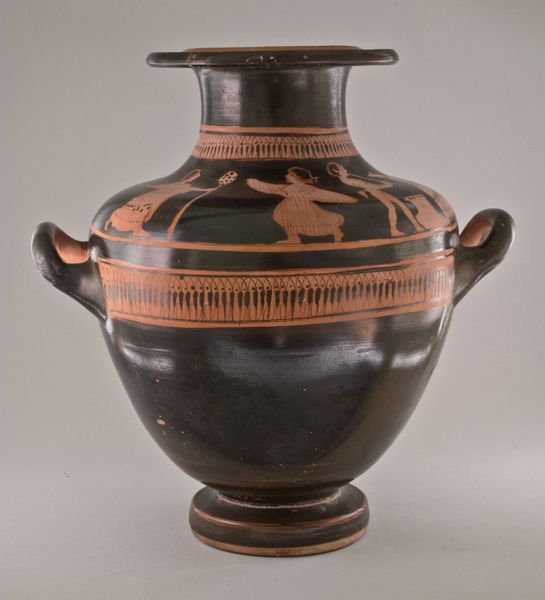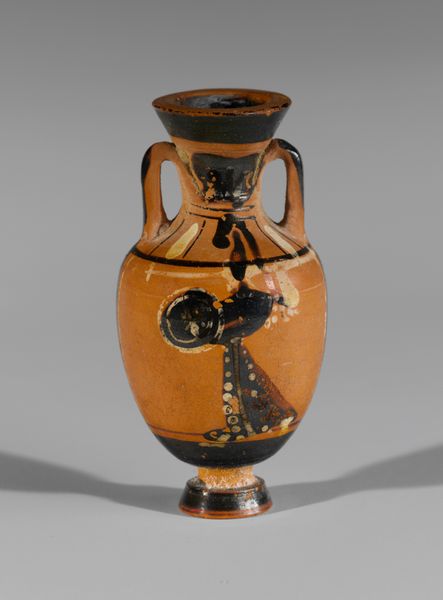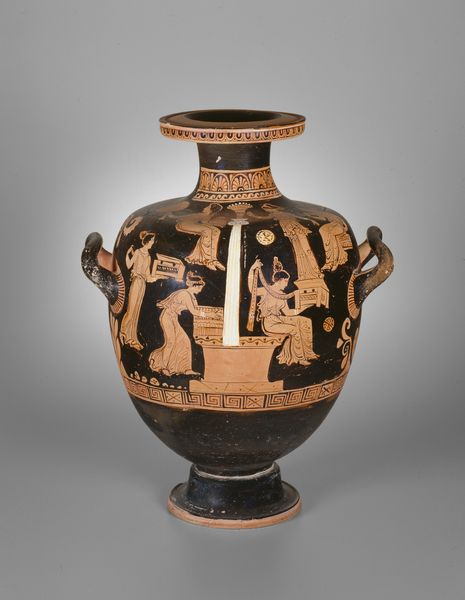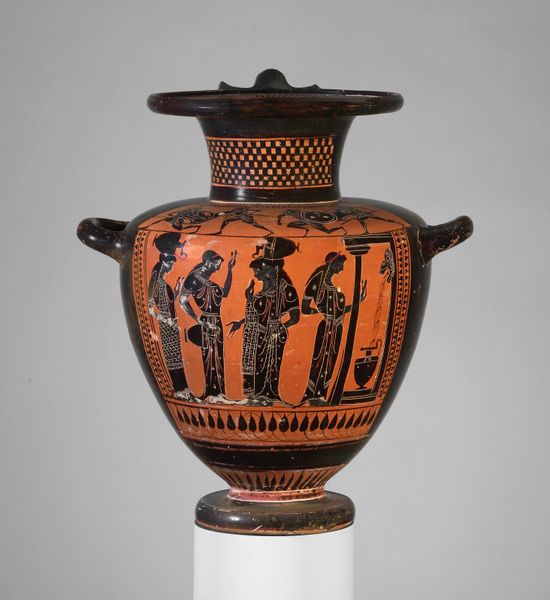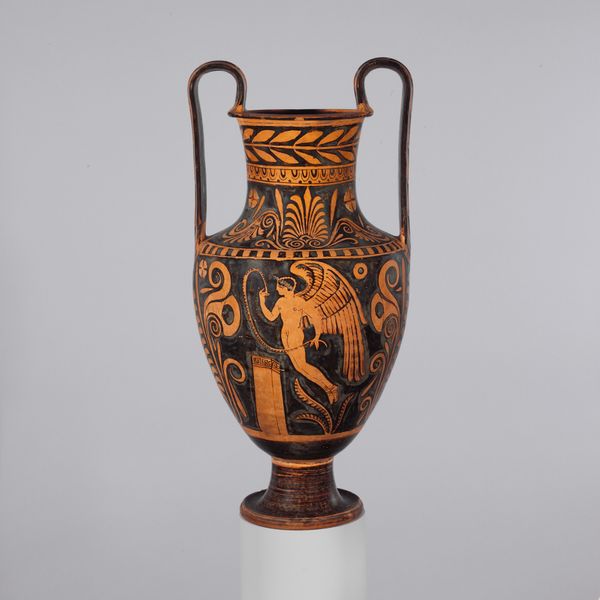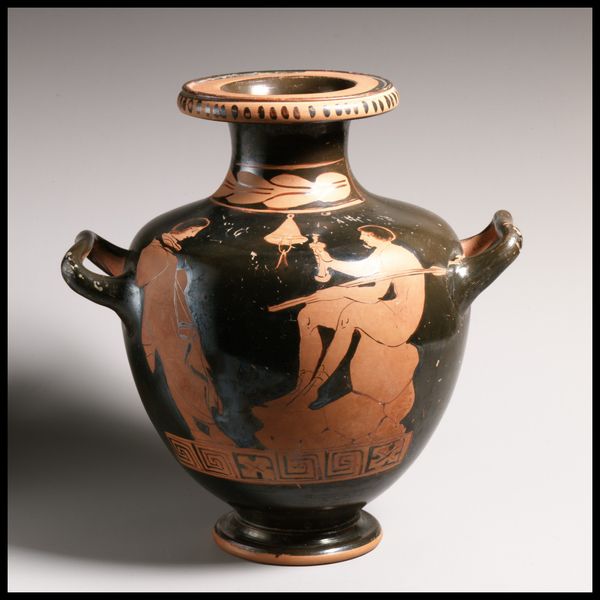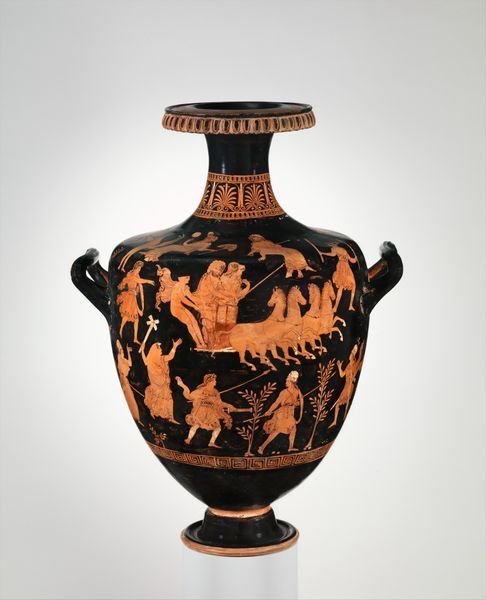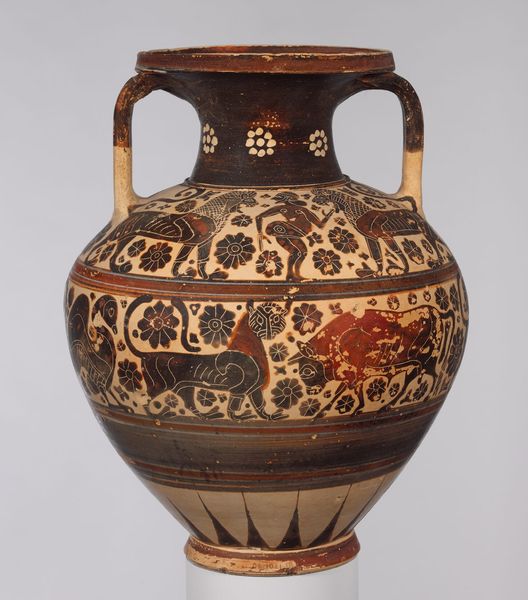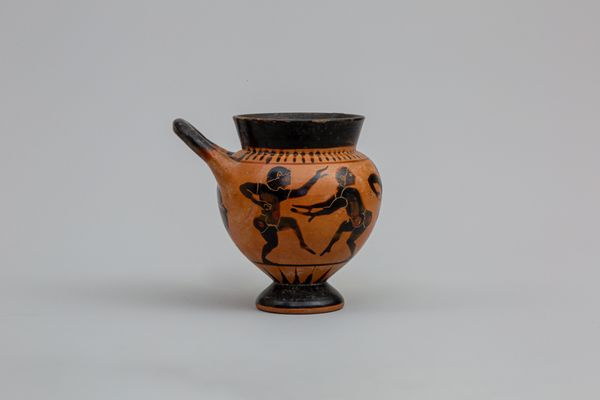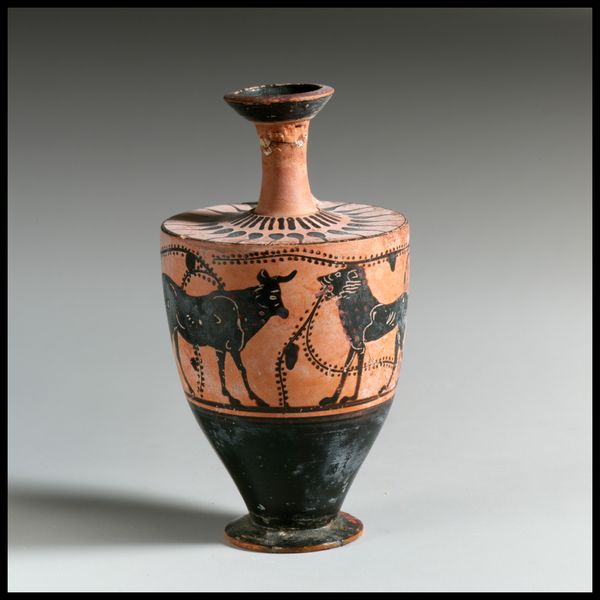
drawing, ceramic
#
drawing
#
narrative-art
#
greek-and-roman-art
#
ceramic
#
figuration
#
ancient-mediterranean
#
ceramic
Dimensions: 20 3/4 x 17 x 15 in. (52.71 x 43.18 x 38.1 cm)
Copyright: Public Domain
Curator: Let's delve into this striking Black-figured Hydria, attributed to the Antimenes Painter and crafted around 530 BCE. You can find this piece in the collection of the Minneapolis Institute of Art. Editor: Immediately, I’m struck by the tension between the stillness of the ceramic and the dynamic narrative unfolding on its surface. There’s a raw energy emanating from the figures. Curator: The black-figure technique itself tells a story. Incisions are made into the black glaze to reveal the red clay beneath, creating striking silhouettes and detail. Consider how the interplay between black and red communicates gender, class, and social status of each depicted figure. Editor: Absolutely. The choice to depict figures solely in these contrasting colors lends them a symbolic weight beyond the merely representational. Black often signified shadows and the unknown, what might have this symbolism been used to imply here? Curator: The narrative scene is quite important here, too. Note the chariots and warriors—they connect directly to Ancient Greek societal structure and power. These visual signifiers reinforced the elite identity of the vase’s user and would’ve made allusions to aristocratic values. The artwork becomes a point of understanding not only gender roles but how violence and honor converge to sustain power dynamics. Editor: Yes, the horses themselves carry considerable cultural weight. Think about the role of the horse in mythology and warfare, freedom and dominance – it is all embedded in how they're illustrated here. Are we intended to consider how these animals are implicated in power relations, their strength serving human ambition? Curator: Indeed. Furthermore, let’s think about the hydria's function. It was designed to carry water. To have this vital, mundane object elevated with scenes of status and war says so much about the permeation of power into everyday life. It underscores how those values dictated and controlled social functions and interactions. Editor: Seeing how such stories would literally wrap around this vessel used in ancient rituals and daily routines adds to their depth. The motifs blend functional art with the constant social negotiation of what is good, noble, and desirable. Curator: And by bringing the worlds of social practice into conversation with symbolic representations of gender, we create an insightful bridge across millennia to discuss their influence and continued importance in shaping how humans perceive the world around them. Editor: Yes. Looking at it again now, one truly comprehends how everyday images have deep ties with broader struggles over identity and social change across historical timelines.
Comments
minneapolisinstituteofart about 2 years ago
⋮
The Antimenes Painter decorated many hydriae--three-handled water jars--of the sort seen here. In the main scene the goddess Athena, painted white to indicate her gender, helps harness her four-horse chariot, assisted by several grooms and the bearded charioteer. This harnessing technique accurately reflects sixth-century b.c. practices. The appearance of Athena dressed for war may refer to her legendary invention of the war chariot or perhaps to an episode from the Iliad.The scene on the shoulder of the vase depicts Zeus, the central figure, intervening in the fight between Heracles (on Zeus' right) and Cycnus (on his left). This divine battle occurred because Cycnus stole the sacrificial animals of the god Apollo.
Join the conversation
Join millions of artists and users on Artera today and experience the ultimate creative platform.
